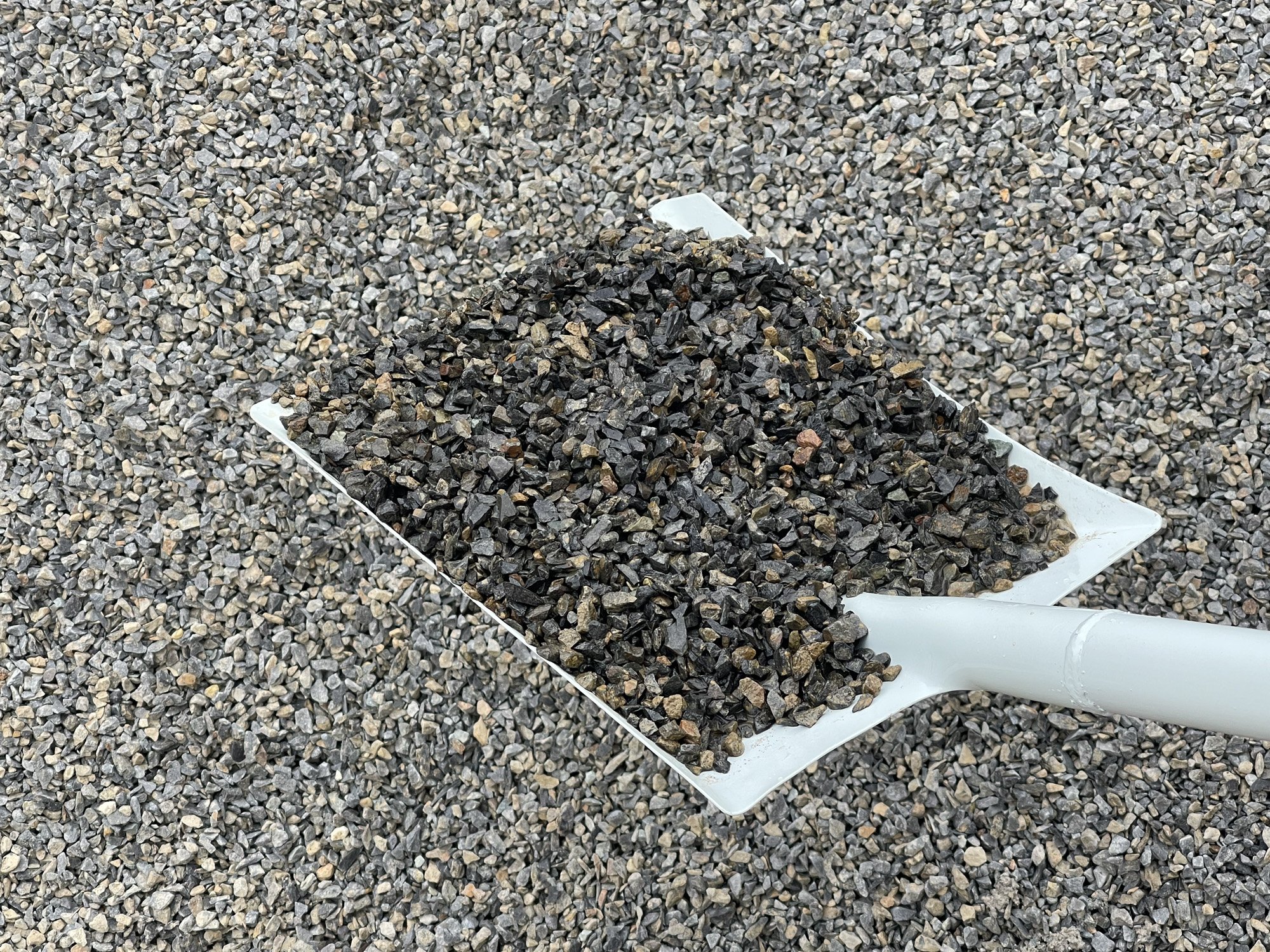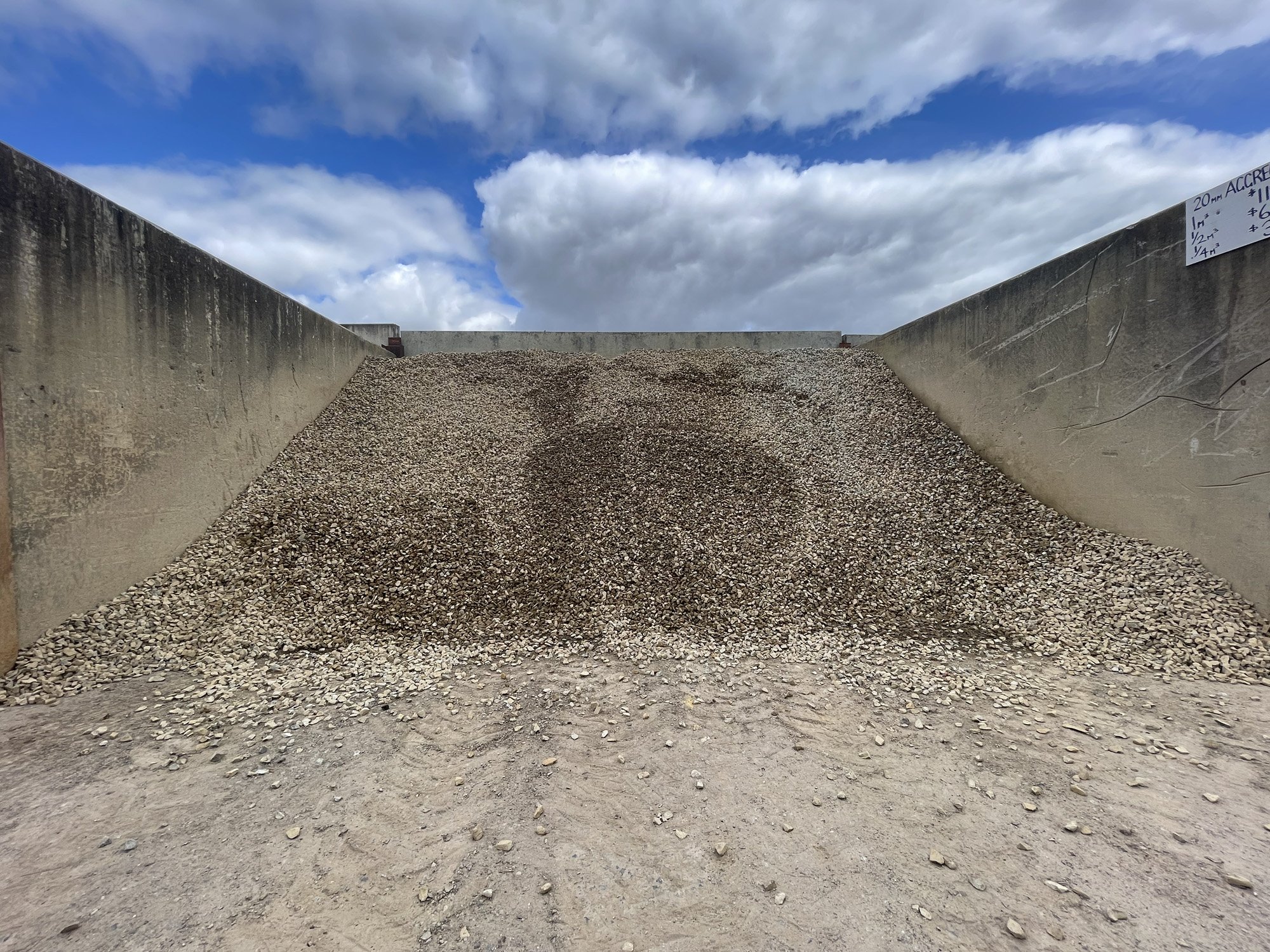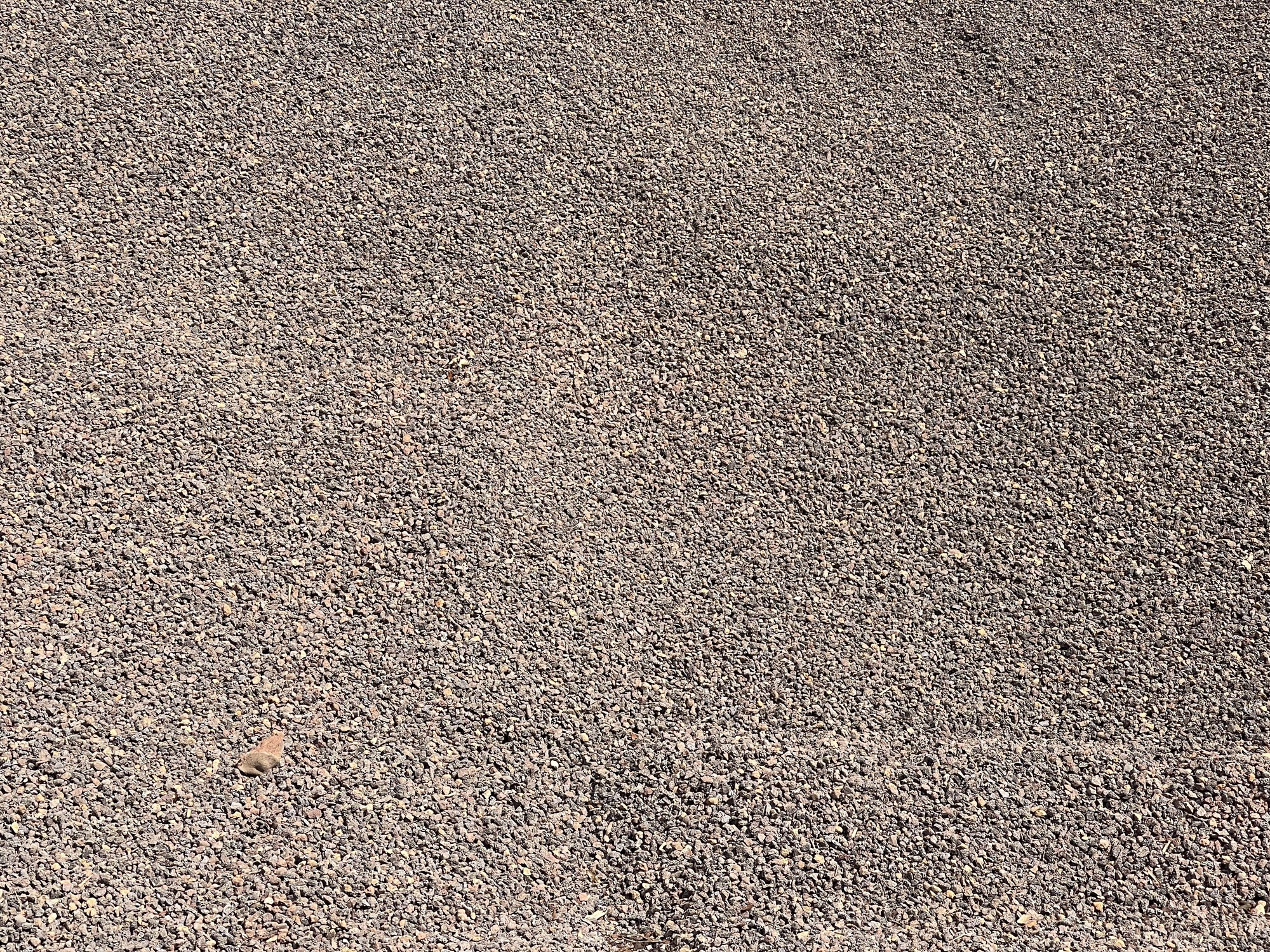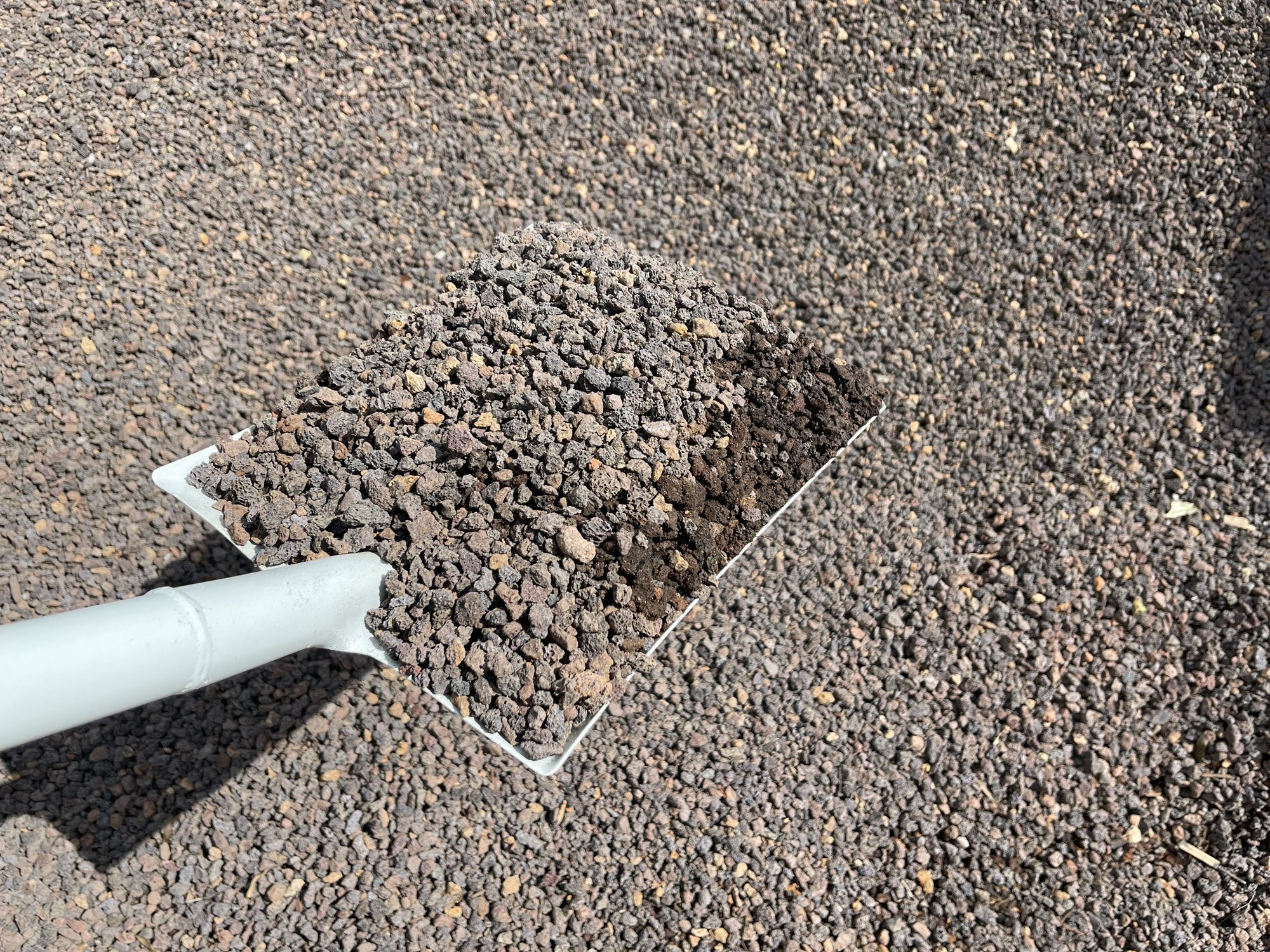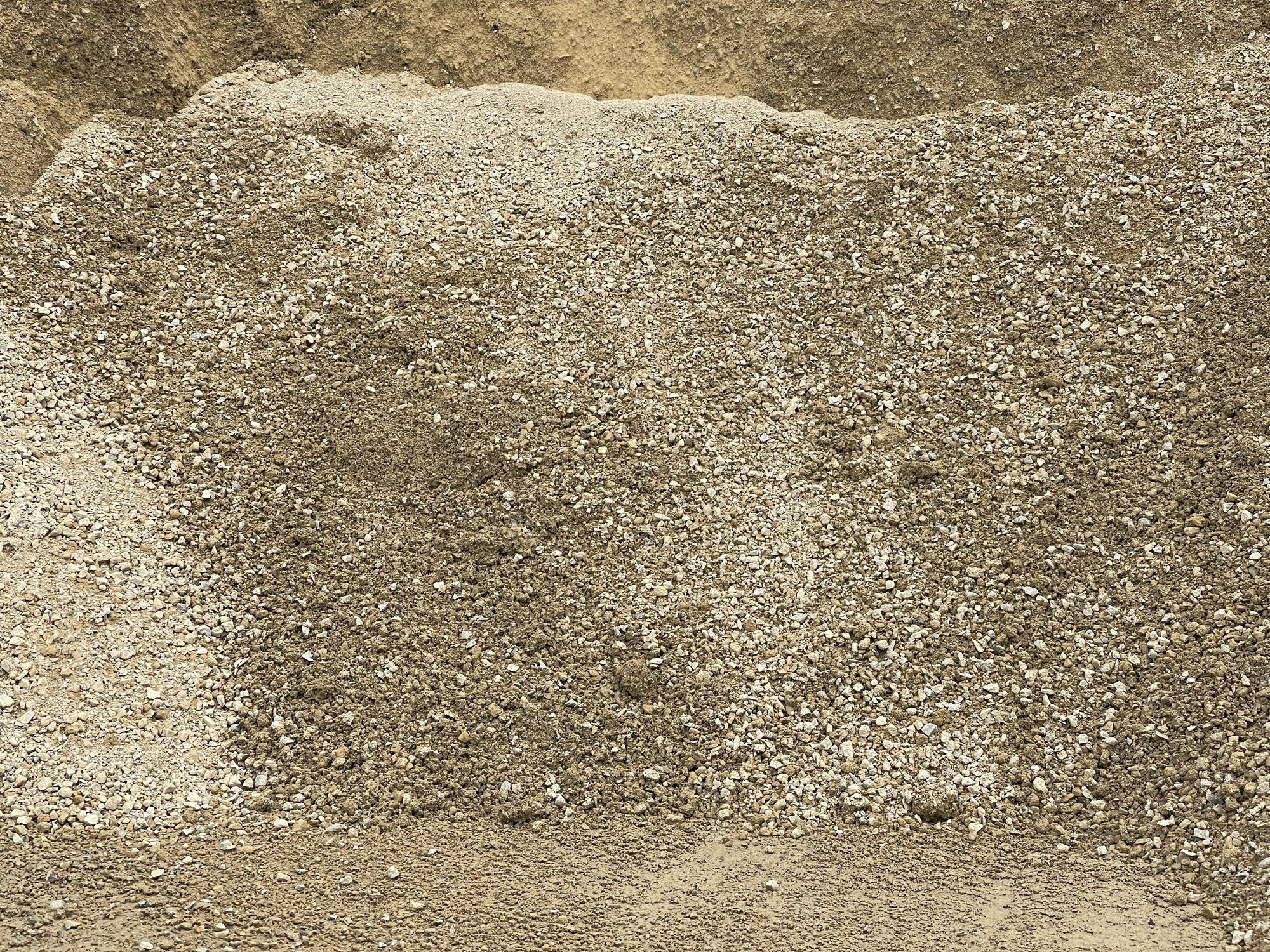Screening & Aggregates
Versatile screening and aggregates for every construction project.
Aggregate 7mm
-
Aggregate, specifically 7mm aggregate, is a construction material consisting of small, uniform-sized particles typically used in a variety of building and infrastructure projects. This size of aggregate is well-suited for applications where a fine to medium texture is desired. It is made from various natural or crushed rock sources and is graded to ensure uniformity and quality.
-
Key characteristics and uses of 7mm aggregate include:
Particle Size: 7mm aggregate consists of particles with a nominal diameter of 7 millimetres. This size falls within the fine to medium range, making it suitable for a variety of construction and landscaping purposes.
Colour: The colour of 7mm aggregate varies depending on the source material but is typically grey, beige, or brown, which blends well with many construction materials.
Grading: The aggregate is carefully graded to ensure that it meets specific size requirements and is free from excessively large or small particles.
7mm aggregate is used in a wide range of construction and landscaping applications, including:
Concrete Production: It is commonly used as one of the primary components in the production of concrete, where it provides bulk and stability to the mix. Concrete made with 7mm aggregate is often used in various construction projects, including building foundations, sidewalks, and driveways.
Asphalt Mix: In the construction of asphalt roads and pavements, 7mm aggregate is used as a component in asphalt mixtures. It contributes to the durability and stability of the road surface.
Drainage Systems: 7mm aggregate is used as a drainage material in construction projects where proper water management is crucial. It helps facilitate water flow and prevents water buildup in areas like stormwater drainage systems or French drains.
Landscaping: This size of aggregate is sometimes used in landscaping projects, such as decorative pathways, garden bed borders, or as a base material for retaining walls and outdoor structures.
Exposed Aggregate Concrete: In decorative concrete applications, 7mm aggregate is often exposed on the surface of concrete slabs by washing away the top layer of cement paste after the concrete has cured. This reveals the natural texture and color of the aggregate, creating an attractive and slip-resistant surface.
In summary, 7mm aggregate is a versatile construction material used in a variety of projects that require a fine to medium texture and reliable performance. Its applications range from structural uses in concrete and asphalt to functional purposes in drainage systems and landscaping, contributing to the stability and functionality of various construction and outdoor projects.
Aggregate 20mm
-
Aggregate, specifically 20mm aggregate, is a common construction material made up of uniformly sized particles with a nominal diameter of approximately 20 millimetres. It is widely used in various construction and infrastructure projects due to its versatility, durability, and suitability for a range of applications.
-
Key characteristics and uses of 20mm aggregate include:
Particle Size: The nominal diameter of 20mm aggregate particles is approximately 20 millimetres. This size falls within the medium range and is a versatile choice for many construction needs.
Colour: The colour of 20mm aggregate varies depending on the source material but is typically gray, beige, or brown. These neutral colours make it compatible with a wide range of construction materials and project aesthetics.
Grading: 20mm aggregate is carefully graded to ensure uniformity and quality. It is typically free from excessively large or small particles.
20mm aggregate is used in a variety of construction and landscaping applications, including:
Concrete Production: It is a key ingredient in the production of concrete, where it provides bulk, stability, and strength to the mix. Concrete made with 20mm aggregate is used in a wide range of construction projects, including building foundations, bridges, highways, and structural elements.
Road Construction: In road and pavement construction, 20mm aggregate is often used as a component in asphalt and concrete mixtures. It contributes to the durability and stability of road surfaces.
Drainage Systems: This size of aggregate is employed as a drainage material in various construction projects, such as stormwater drainage systems, French drains, and trench backfilling. It facilitates proper water flow and prevents water buildup.
Landscaping: In landscaping, 20mm aggregate may be used for various purposes, including creating decorative pathways, garden bed borders, or as a base material for retaining walls and outdoor structures.
Exposed Aggregate Concrete: In decorative concrete applications, 20mm aggregate can be exposed on the surface of concrete slabs by washing away the top layer of cement paste after the concrete has cured. This reveals the natural texture and color of the aggregate, creating an attractive and slip-resistant surface.
Structural Fill: It is used as structural fill material in construction projects, providing a stable and compacted base for various structures, including buildings and roads.
20mm aggregate's versatility and strength make it a fundamental material in the construction industry. Whether used in concrete, asphalt, drainage systems, or landscaping, it contributes to the stability and functionality of a wide range of construction and outdoor projects.
Stone Dust 3mm Minus
-
Stone Dust 3mm Minus is a finely crushed rock product that forms a compact and stable base, making it an essential material for construction, landscaping, and paving projects. Comprising particles up to 3mm in size, this versatile material is commonly used as a bedding layer for pavers, a levelling base for concrete slabs, and a binding agent for pathways and driveways.
Highly compactable and easy to spread, Stone Dust creates a firm foundation that minimises shifting and settling over time. Its excellent drainage properties also make it ideal for use in areas where water runoff needs to be controlled, preventing erosion and maintaining surface stability.
-
One of the primary benefits of Stone Dust 3mm Minus is its high compaction rate, which provides a strong and stable base for pavers, concrete slabs, and other hard surfaces. When compacted, it forms a solid foundation that prevents movement and sinking, reducing the risk of uneven surfaces or cracking. Its fine particle size also allows for precise levelling, ensuring a smooth and professional finish for any project.
Beyond its structural benefits, Stone Dust is a practical and cost-effective solution for a variety of applications. It enhances drainage in outdoor spaces by allowing water to filter through while maintaining a stable surface, making it ideal for pathways, driveways, and artificial turf bases. Additionally, it serves as an excellent binding agent for compacted gravel surfaces, helping to lock in larger aggregates and prevent displacement. Durable, easy to work with, and environmentally friendly, Stone Dust 3mm Minus is a reliable choice for both DIY and professional landscaping projects.
Scoria 7mm
-
Scoria, specifically 7mm scoria, is a volcanic rock material often used in landscaping and construction for its lightweight and porous properties. This type of volcanic rock is characterised by its reddish to black colour and is commonly sourced from volcanic regions. It has unique characteristics that make it suitable for various outdoor applications.
-
Key characteristics and uses of 7mm scoria include:
Particle Size: 7mm scoria consists of small, lightweight particles with a nominal diameter of approximately 7 millimetres. This size is ideal for specific landscaping and construction purposes.
Colour: Scoria typically exhibits a reddish to black colour, which can vary depending on the specific geological source. Its natural hues add visual interest to outdoor projects.
Lightweight: One of the notable features of scoria is its lightweight nature. It is significantly lighter than many other landscaping materials, making it easier to handle and transport.
Porous: Scoria is highly porous, with numerous cavities and air pockets within the rock. This porosity allows it to retain moisture and provide aeration, making it suitable for specific horticultural and drainage applications.
7mm scoria is used in various landscaping and construction applications, including:
Horticultural Uses: Scoria is often used as a growing medium in horticulture, particularly for plants that prefer well-aerated and moisture-retentive soil. It is used in potting mixes and as a component in soil blends for container gardening.
Landscaping: Scoria can be used as a decorative mulch or ground cover in landscaping projects. Its natural reddish or black colour provides a striking contrast and adds texture to garden beds and pathways.
Drainage Systems: Due to its lightweight and porous nature, scoria is an excellent choice for drainage applications. It is used in French drains, drainage trenches, and other landscaping features to promote proper water drainage while preventing soil erosion.
Paver Installation: Scoria can serve as a base material for the installation of concrete pavers or paving stones. It provides a stable and well-draining foundation for these hardscape elements.
Terrariums and Succulent Gardens: Its lightweight and porous qualities make scoria an ideal choice for creating terrariums and succulent gardens, where it aids in moisture regulation and plant health.
Volcanic Rock Gardens: Scoria is sometimes used in the creation of rock gardens or xeriscaping designs, where it adds a volcanic and rugged texture to the landscape.
In summary, 7mm scoria is a versatile landscaping material known for its lightweight, porous, and visually striking qualities. Its applications range from horticulture to drainage solutions and decorative landscaping, making it a valuable choice for various outdoor projects where its unique properties are advantageous.
Scoria 20mm
-
Scoria, specifically 20mm scoria, is a volcanic rock material commonly used in landscaping and construction for its unique appearance and versatile properties. This type of volcanic rock is known for its lightweight nature, porous texture, and striking reddish to black coloration. It is sourced from volcanic regions and has a range of applications in outdoor projects.
-
Key characteristics and uses of 20mm scoria include:
Particle Size: 20mm scoria consists of relatively larger, lightweight particles with a nominal diameter of approximately 20 millimetres. This size makes it suitable for various landscaping and construction purposes.
Colour: Scoria typically exhibits a reddish to black colour, which can vary depending on its geological source. Its natural hues add aesthetic appeal to outdoor projects.
Lightweight: Scoria is notably lightweight compared to many other landscaping materials. This characteristic makes it easier to transport and handle, which is advantageous in construction and landscaping applications.
Porous: Scoria is highly porous, with numerous cavities and air pockets within the rock. This porosity allows it to retain moisture, making it useful for specific horticultural applications.
20mm scoria is used in a variety of landscaping and construction applications, including:
Horticultural Uses: Scoria is often used as a growing medium for plants that require well-aerated and moisture-retentive soil. It is commonly found in potting mixes and soil blends for container gardening.
Landscaping: Scoria is utilised as decorative mulch or ground cover in landscaping projects. Its reddish to black color adds visual interest to garden beds, pathways, and other outdoor areas.
Drainage Systems: Due to its lightweight and porous nature, scoria is an excellent choice for drainage applications. It is used in French drains, drainage trenches, and other landscaping features to facilitate proper water drainage while preventing soil erosion.
Paver Installation: Scoria can serve as a base material for the installation of concrete pavers or paving stones. It provides a stable and well-draining foundation for these hardscape elements.
Volcanic Rock Gardens: Scoria is sometimes employed in the creation of rock gardens or xeriscaping designs, where it adds a volcanic and rugged texture to the landscape.
Mulching: In garden beds, scoria can act as a mulch to conserve soil moisture, regulate temperature, and deter weed growth.
Lightweight Backfill: In construction, scoria is used as a lightweight backfill material in various applications, including filling trenches or excavated areas.
In summary, 20mm scoria is a versatile landscaping material known for its lightweight, porous, and visually striking qualities. Its applications range from horticulture to drainage solutions and decorative landscaping, making it a valuable choice for various outdoor projects where its unique properties are advantageous.
Concrete Mix
-
Concrete mix, often referred to simply as "concrete," is a versatile and widely used construction material composed of a combination of cement, aggregates (such as sand and gravel or crushed stone), water, and optional additives or admixtures. It is known for its strength, durability, and versatility, making it a fundamental component in a wide range of construction projects.
-
Key characteristics and components of concrete mix include:
Cement: Cement is the binding agent in concrete. It is typically Portland cement, a fine powder that, when mixed with water, undergoes a chemical reaction known as hydration. This reaction forms the "glue" that holds the aggregates together and hardens the mixture into a solid material.
Aggregates: Aggregates are granular materials added to the mix to provide bulk, stability, and durability. Common aggregates include sand, gravel, and crushed stone. The size and type of aggregates used can vary based on the intended application and structural requirements.
Water: Water is a critical component of the concrete mix, as it initiates the hydration process in cement and enables the mixture to be workable and flowable during placement. The water-to-cement ratio is carefully controlled to achieve the desired strength and consistency.
Admixtures: Admixtures are optional additives that can be incorporated into the concrete mix to enhance specific properties or address particular challenges. Common admixtures include accelerators, retarders, air-entraining agents, and plasticizers. These additives can modify the setting time, workability, or durability of the concrete.
Concrete mix is used in a wide range of construction applications, including:
Structural Foundations: It forms the basis for building foundations, providing stability and load-bearing capacity.
Slabs and Floors: Concrete mix is used to create flat and level surfaces for floors, slabs, and pavements in residential, commercial, and industrial settings.
Walls: Concrete is employed in the construction of walls, both as load-bearing structural walls and as decorative or architectural finishes.
Bridges and Infrastructure: It plays a crucial role in the construction of bridges, highways, tunnels, and other large-scale infrastructure projects.
Precast Concrete Products: Concrete mix is used to create precast elements such as precast concrete panels, pipes, and blocks, which are manufactured off-site and transported for installation.
Decorative and Architectural Elements: Decorative concrete mixtures can be used to create aesthetically pleasing surfaces, stamped patterns, and textured finishes.
Repair and Maintenance: Concrete mix is used for repairing and restoring existing concrete structures, such as bridges, buildings, and pavements.
Retaining Walls: Concrete is employed in the construction of retaining walls to provide support and prevent soil erosion.
Landscaping: Decorative concrete mixes are used for various landscaping features, including pathways, patios, and outdoor seating areas.
The versatility and strength of concrete make it an essential construction material for projects of all sizes and complexities. The specific formulation and proportions of the components in the concrete mix can be adjusted to meet the desired strength, durability, and performance characteristics required for each application.
14mm Aggregate
-
14mm Aggregate is a durable, multi-purpose crushed rock commonly used in landscaping, drainage, and construction projects. With its uniform 14mm size, this high-quality aggregate provides excellent compaction and stability, making it ideal for pathways, driveways, concrete mixes, and decorative landscaping features. Its natural mix of grey and earthy tones ensures it blends seamlessly into various outdoor settings while offering long-lasting structural support.
This versatile aggregate is sourced from premium rock deposits and screened to ensure consistency in size and shape. Whether used for road base, backfilling, or decorative garden beds, 14mm Aggregate is a practical and cost-effective solution for residential and commercial projects alike.
-
One of the key advantages of 14mm Aggregate is its superior drainage properties, making it an ideal material for areas prone to water pooling or erosion. The consistent size of the crushed rock allows for optimal water flow while maintaining surface stability, reducing the risk of mud, flooding, or soil displacement.
In addition to drainage, 14mm Aggregate is highly durable and low-maintenance. It compacts well under pressure, providing a stable base for construction projects, including concrete slabs, roadways, and footpaths. Its weight also acts as a natural weed suppressant, reducing the need for herbicides or frequent maintenance in garden beds and decorative landscaping. With its strength, versatility, and aesthetic appeal, 14mm Aggregate is a smart choice for builders, landscapers, and homeowners looking for a long-lasting and functional material.



